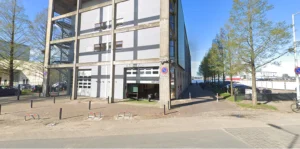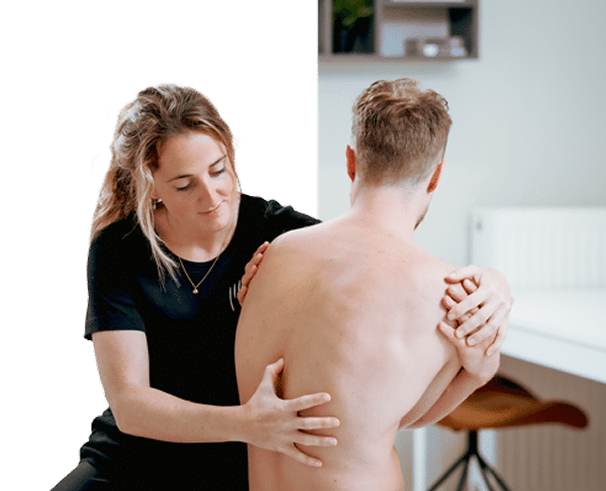Osteoarthritis
Osteoarthritis is a common form of rheumatoid arthritis that affects millions of people. It is a chronic condition in which the quality of cartilage in joints, such as your knees, hips, hands or back, gradually deteriorates. Although osteoarthritis cannot be cured, there are several ways to manage the symptoms and prevent further damage to the joints. In this article, we cover exactly what osteoarthritis is, what the symptoms are, what causes it and how you can reduce the symptoms.
What is osteoarthritis?
Osteoarthritis is a condition that affects the entire joint. The cartilage, which normally protects the bones in the joint and helps them move smoothly, deteriorates and can become brittle. This can cause bones to rub against each other, causing pain and stiffness. In addition, the bone directly beneath the cartilage may change, leading to the formation of bony nodules(osteophytes). The joint may also become inflamed and the muscles surrounding the joint may weaken, causing further movement restrictions and pain.
Osteoarthritis can occur in one joint, but it is also possible for several joints to be affected at the same time. Common locations for osteoarthritis include the knees, hips, neck, lower back, thumbs, fingers and big toes.
Symptoms of osteoarthritis
The symptoms of osteoarthritis often develop slowly and may increase in severity as time goes on. Common symptoms include:
- Pain: Especially during or after movement, but in severe cases the pain may also be present at rest.
- Stiffness: Especially after long periods of inactivity, such as in the morning when getting up or after sitting for a long time.
- Reduced range of motion: It may be difficult to fully move a joint.
- Creaking sounds: A creaking or crunching sound during movement (crepitating).
- Swelling: The joint may sometimes swell, especially after overuse.
- Instability: Weakened muscles and damaged joints can make the joint feel unstable.
- Altered posture: With advanced osteoarthritis, joints may change shape, leading to abnormal posture (e.g., O- or X-legs in knee osteoarthritis).
Causes and risk factors
Although the exact cause of osteoarthritis is not yet concrete, there are some factors that contribute to the development of the condition:
- Age: Osteoarthritis is more common in the elderly because cartilage can wear down over time.
- Excess weight: Extra body weight stresses the joints, especially the knees and hips, increasing the risk of osteoarthritis.
- Joint injuries: Previous injuries or overuse of joints from sports or physically demanding work, for example, can lead to osteoarthritis.
- Heredity: Osteoarthritis is more common in some families, indicating a genetic predisposition.
- Inflammatory rheumatism: People with inflammatory rheumatism, such as rheumatoid arthritis, have an increased risk of developing osteoarthritis.

Treatment and prevention of osteoarthritis
Although osteoarthritis cannot be cured, there are several treatment methods that help reduce symptoms and slow the progression of the disease. Treatment focuses on reducing pain, improving mobility and maintaining quality of life.
Self-care and lifestyle modifications
One of the most important steps in treating osteoarthritis is adjusting your lifestyle. This can help reduce symptoms and prevent further damage.
- Keep moving: Regular, moderate-intensity exercise helps keep the muscles around the joint strong and reduce stiffness. Walking, cycling, swimming and yoga are examples of suitable activities for people with osteoarthritis. Exercise at least 30 minutes a day and avoid sitting for long periods of time.
- Healthy weight: If you are overweight, losing weight can help reduce pressure on your joints. This can lead to less pain, especially in the knees and hips.
- Avoid overexertion: Try to limit activities that put heavy strain on your joints, such as intense strength sports or prolonged standing. Divide physical activities smartly throughout the day and alternate rest and exercise.
Physical therapy and treatment
Physical therapy plays an important role in treating osteoarthritis. For example, the Physioman for example, specializes in relieving pain and improving mobility through customized therapies and exercise programs. Regardless of which physical therapist you choose, you want to be helped by experts who will help you move safely and build muscle strength to reduce stress on your joints.
The following techniques may be used during physical therapy:
- Exercise therapy: In exercise therapy, you will receive a personalized exercise program tailored to your symptoms and goals. Exercises can focus on strengthening the muscles around the joint, improving flexibility and maintaining range of motion.
- Balance and coordination training: This helps reduce the risk of falls, especially with knee or hip osteoarthritis.
- Posture training: Good posture prevents further strain on the joints. Physioman specialists will help you improve this posture.
In addition, various physical therapists such as the Physioman provide advice on how to continue to exercise at home to get the best results. These treatments not only help with pain relief, but ensure that surgery can sometimes be delayed or even avoided altogether.
Relief of pain through medication
For people with moderate to severe pain, medications can help reduce symptoms:
- Paracetamol: This is often the first choice for mild to moderate pain.
- Anti-inflammatory analgesics (NSAIDs): Medications such as ibuprofen or diclofenac can help with pain and inflammation. However, they can have side effects, especially with long-term use, so always consult with your doctor.
- Creams and gels: There are pain-relieving creams and gels that can be applied directly to the painful joint.
- Injections: Sometimes injections of corticosteroids are used to temporarily reduce inflammation and pain in the joint. However, this is not recommended for long-term use because it can damage cartilage.
Surgery
In severe cases of osteoarthritis, when other treatments do not help enough, surgery may be necessary. The latter option may include joint replacement, such as an artificial hip or artificial knee.
- Knee or hip replacement: For advanced osteoarthritis in the knee or hip, an artificial joint can improve mobility and relieve pain. After surgery, physical therapy helps build strength, mobility and coordination so that daily activities can be safely resumed.

What can you do yourself at home?
In addition to the professional treatments offered, you can do a lot yourself to reduce the symptoms of osteoarthritis and keep your joints healthy:
- Healthy diet: Maintain a varied diet rich in vegetables, fruits, and healthy fats. This can help reduce inflammation and keep your weight under control.
- Quit smoking: Smoking can contribute to inflammation in the body and slow down the healing process. Quitting smoking may help slow the progression of osteoarthritis.
- Plan activities smartly: Spread your activities throughout the day to avoid overloading your joints. Alternate exertion with rest and build up your movement gradually.
Applying for physical therapy for osteoarthritis at The Physio Man
With osteoarthritis, it is important to seek help when your symptoms worsen or when you have difficulty with daily activities. Physio Man specialists are ready to help you with customized therapies and personalized advice. Our physical therapists will help you with exercises, posture corrections and treatments to reduce pain and make your joints stronger.
Make an appointment today at The Physio Man and let our experienced therapists guide you to reduce your osteoarthritis symptoms and improve your quality of life.
Why choose The Physio Man?
- Latest treatment techniques
- We look at the body as a whole
- 80% of our patients are complaint-free within a few treatments
- No long waiting lists
- Also open in the evening
At The Physio Man, we offer a wide range of treatment options aimed at reducing symptoms and improving quality of life. For questions or an intake consultation, contact us. Email info@defysioman.nl or call 020-3542926. Prefer to come by? Visit us at Jan van Galenstraat 301 in Amsterdam.


